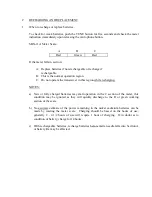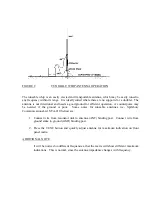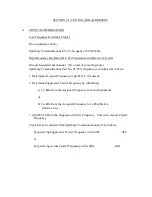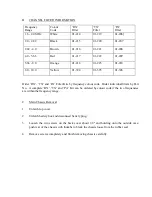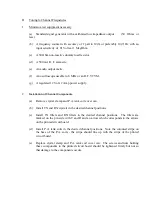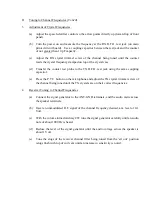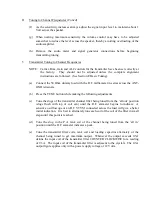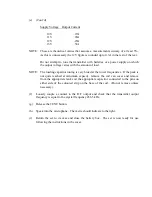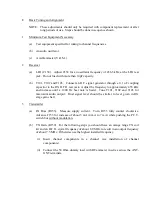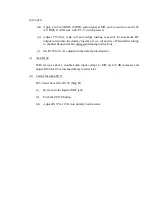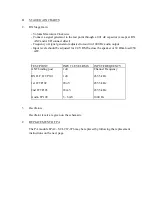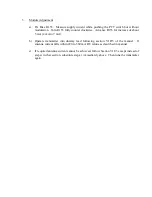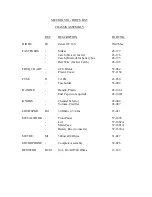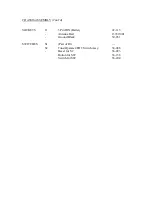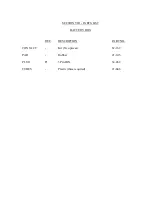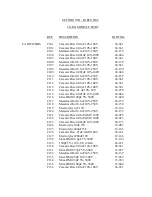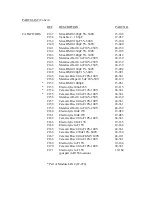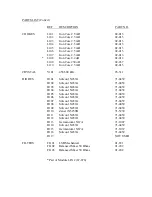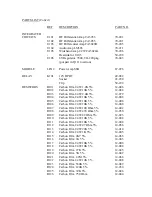
D.
Tuning to Channel Frequencies (Cont’d)
(f) As the sensitivity increases always adjust the signal input level to maintain about 1
Volt across the speaker.
(g) When nearing maximum sensitivity the volume control may have to be adjusted
somewhat to reduce the level across the speaker, thereby avoiding overloading of the
audio amplifier.
(h) Remove the audio meter and signal generator connections before beginning
transmitting tuning.
5.
Transmitter Tuning to Channel Frequencies
NOTE: Carrier, Bias, Gain and ALC controls for the transmitter have been set correctly at
the factory. They should not be adjusted unless the complete alignment
instructions are followed. (See Section E Basic Tuning).
(a) Connect the 50 Ohm dummy load with the R.F. milliameter in series across the ANT-
GND terminals.
(b) Press the TUNE button while making the following adjustments.
(c) Tune the slugs of the transmitter channel filter being tuned from the ‘all out’ position
(slugs flush with top of coil can) until the R.F. ammeter begins to indicate. A
sensitive oscilloscope or an R.F. VTVM connected across the load will give a better
initial indication. It is best to alternately tune each coil of the coil of the filter in small
steps until this point is reached.
(d) Tune the slug in the P.A. tank coil of the channel being tuned from the ‘all in’
position until the R.F. ammeter indicates a peak.
(e) Tune the transmitter filter coils, tank coil and loading capacitor alternately of the
channel being tuned to get maximum output. Whenever the output exceeds 0.3A
detune the input coil of the transmitter filter COUNTER CLOCKWISE for a reading
of 0.3A. The input coil of the transmitter filter is adjacent to the crystals. The 0.3A
output figure applies only with a power supply voltage of 12 Volts.





